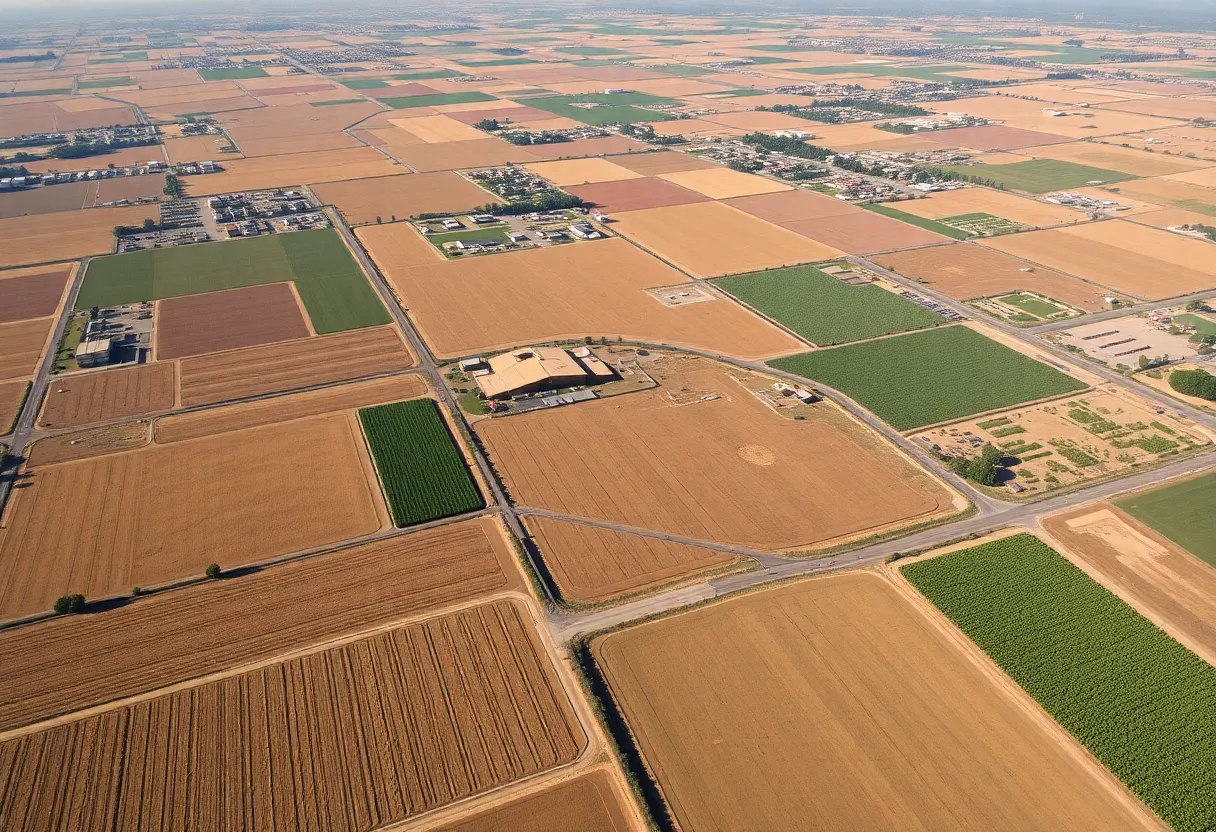California Faces $16 Billion Tax Revenue Shortfall


California's agriculture landscape facing economic challenges due to tariff policies.
News Summary
California is projected to face a $16 billion tax revenue shortfall in the upcoming fiscal year due to tariff policies imposed by the federal government. The decline in revenue is attributed mainly to a downturn in the stock market and significant losses in capital gains, corporate profits, and personal income taxes. The agricultural sector is particularly affected, with rising costs and potential trade restrictions further straining California’s economy. Key industries, including agriculture and film, may face increased challenges, raising concerns about overall economic growth in the state.
California is facing a projected $16 billion shortfall in tax revenue for the upcoming fiscal year, primarily due to President Donald Trump’s tariff policies, according to state financial forecasts. This anticipated revenue decline represents a 4% dip from prior estimates, which has been largely attributed to a downturn in the stock market following Trump’s tariff announcement on April 2.
Key components of the financial impact include an estimated loss of $10 billion from reduced capital gains, $2.5 billion from diminished corporate profits, and $3.5 billion from decreased personal income tax receipts, encompassing wages and business incomes. The repercussions from these tariffs have started reverberating throughout various sectors in California, especially in agriculture and imports.
Increasing tariffs are disrupting vital crop trading, delaying machinery purchases, and restricting imports of essential chemicals used in agriculture. As a result, major agricultural corporations such as Archer-Daniels-Midland Co. and Bunge Global SA reported a combined operating profit decrease of approximately $750 million in the first quarter of the year, underscoring the adverse effects of the ongoing trade war.
With importers hesitating to purchase U.S. grain and oilseeds due to looming tariff threats, the flow of trade has been significantly impacted. Suppliers like Mosaic Co. have noticed a decline in phosphate shipments, a crucial ingredient for crop production, due to vessels being diverted to avoid U.S. tariffs.
Farmers in California are bracing for rising costs, with expected increases of up to 7.5% in pesticide prices. The agricultural sector in the state, which is the largest importer and second-largest exporter among U.S. states, has already begun to feel the fallout from these tariffs. In 2022 alone, California’s almond exports reached $4.7 billion, and the industry could lose up to $875 million as trade restrictions take hold.
Furthermore, as tariffs escalate, food prices for staple products such as avocados, milk, and almonds are projected to increase, further intensifying the economic strain on consumers and producers alike. The potential for retaliatory tariffs from countries like China, which has enacted a 34% tariff on U.S. goods, is exacerbating these challenges and threatening California’s agricultural sector and economic growth.
The trade turmoil has also projected to significantly impact the Port of Long Beach. Authorities there anticipate a 35-40% reduction in business due to uncertainties surrounding tariffs, raising concerns about job security for dock workers and truckers who rely on port operations. Additionally, the Port of Los Angeles could see a 10% decline in cargo volume, indicating fewer job opportunities in the region.
The California film industry may not escape unscathed, as the tariff regime could raise production costs, potentially leading to job losses in both manufacturing and the entertainment sector. Economic experts have expressed concern that the broader implications of these tariffs could hinder California’s economic development, especially given its role in nationwide exportation.
In summary, California’s economy stands to face significant challenges as a result of Trump’s tariff policies, which are set to be enacted between April 5 and 9. With a worsening trade landscape and potential retaliatory measures, the state’s critical industries—including agriculture and imports—are bracing for a tough fiscal year ahead. As the state prepares to navigate this downturn, the economic landscape remains uncertain, and the implications of these tariffs will continue to unfold in the coming months.
Deeper Dive: News & Info About This Topic
- Los Angeles Times: U.S. farm economy starting to see first hits from Trump tariffs
- Wikipedia: United States tariffs
- San Francisco Chronicle: Trump tariffs impact on almond prices
- Google Search: California tariffs impact
- ABC7: Tariffs impacting Port of Long Beach
- Google Scholar: California tariffs
- Desert Sun: How California may be affected by new tariffs
- Encyclopedia Britannica: United States trade policy
- Wall Street Journal: Impacts of tariff war in California
- Google News: Trump tariffs California
Recent Posts
New Hive Live Residential Development Advancing in Costa Mesa
News Summary The Hive Live project, spearheaded by Legacy Partners, is set to transform a…
Orange County’s Rooftop Dining Scene This Summer
News Summary As summer approaches, Orange County is ready to welcome a surge of visitors…
Residents of San Juan Capistrano Oppose Battery Storage Facility
News Summary In San Juan Capistrano, concerns are escalating over the proposed Compass Energy Storage…
Police Activity Causes Traffic Jam on 55 Freeway
News Summary Drivers experienced significant delays during the evening commute on the 55 Freeway in…
Huntington Beach Residents Prepare for Library Measures Vote
News Summary Huntington Beach is set to hold a special election where residents will vote…
Huntington Beach Artist Turns Misunderstanding into Compassion
News Summary A local artist in Huntington Beach, Chapman Hamborg, transformed a misunderstanding where he…